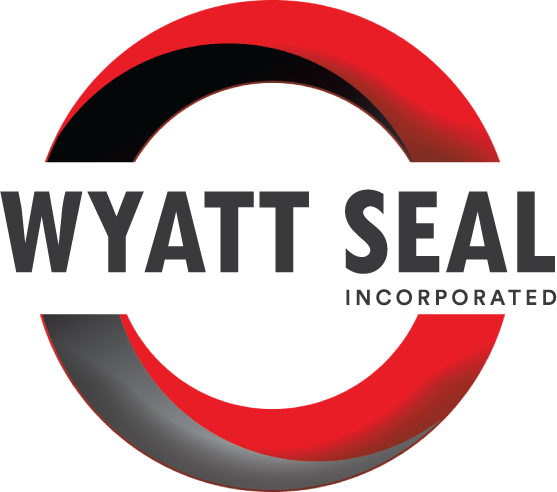Introduction
At Wyatt Seal, we understand that your projects are subjected to diverse pressure demands. With our 50-year legacy of expertise, we're not just suppliers; we're partners in your journey toward finding the perfect seal for any pressure scenario.
We created this guide to make your selection process as smooth as possible. Our focus is on performance, reliability, and compatibility, giving you confidence that your seal choice can withstand the pressures your project demands.
Understanding Your Seal’s Pressure Environments
When starting your search for an industrial seal, it's helpful to consider the pressure landscape of the application. Applications exposed to harsh conditions, such as oil and gas, heavy equipment, and hydraulics and pneumatics, may require a seal that can perform well in high- or low-pressure environments.
High-Pressure Environments
In high-pressure situations, you need a seal that won’t deform or lose its strength. The focus should be on selecting seals that can handle relentless force and maintain their integrity. Choosing a seal that won't falter under extreme stress is crucial for ensuring safety and reliability in the most demanding conditions.
Low-Pressure Environments
In low-pressure environments, the challenge is different. While high-pressure environments are often assumed to be more complex, low-pressure environments present their own unique challenges. For example, in colder temperatures, a seal designed for low pressure may not be energized enough to function effectively.
In these conditions, the seal must remain effective even with minimal force. It is not just a matter of withstanding pressure; the seal must be able to adapt to slight changes and maintain a consistent seal under varying conditions.
To choose the right seal for your application, match the seal's characteristics with the specific pressure demands of the application.
Choosing Your Seal’s Material
After understanding the pressure landscape for your application, you can select the appropriate material with a hardness scale that meets specific requirements.
Typically, softer materials like silicone or general-purpose nitrile with a lower Shore A hardness rating are preferred for low-pressure environments. These materials offer flexibility and provide a reliable seal despite minimal force.
Materials like polyurethane or high-durometer nitrile, which have higher Shore A ratings, are ideal for high-pressure applications due to their strength and resistance to deformation under intense pressure.
The material properties, such as hardness and compression set, can help you determine a seal's pressure resistance. Hardness, measured on the Shore A scale, indicates a material's ability to withstand physical stress without deforming. In other words, a harder material can maintain its shape and seal in high-pressure environments.
Compression set measures how well a material can return to its original thickness after being compressed. A low compression set is ideal for dynamic applications where the seal is repeatedly compressed and released. This helps preserve the seal’s effectiveness over time.
It’s also important to consider the impact of temperature and chemical exposure on the material you choose. When subjected to high temperatures and pressure, the material can soften and become more susceptible to extrusion. In the same way, exposure to certain chemicals can cause the material to degrade, which can alter its physical properties and performance.
By understanding these material properties and environmental conditions, you can make more informed decisions and select effective materials that maximize performance and durability.
Testing Your Seal’s Performance
Once you've selected a seal based on pressure, material, and environmental factors, the next critical step is testing. At Wyatt Seal, we recognize that the true measure of a seal's performance lies in its ability to function under real-world conditions.
We recommend testing a variety of factors, such as pressure, temperature, and chemical exposure. These tests will help you identify any potential weaknesses in the seals and ensure your sealing solution is suitable and reliable.
One of the benefits of working with Wyatt Seal to find the right sealing solution is that you get access to the top suppliers worldwide. Through these partnerships, we can offer additional support and services, such as finite element analysis (FEA), to give you peace of mind and confidence in your selection.
Conclusion
We're committed to guiding you through the process of selecting the right seal for your needs. We understand what failure means to your operations, and the success of your project hinges on the reliability and performance of the seals you choose.
If you need help navigating this process to find the right seal for your project, talk to a seal expert at Wyatt Seal. We’ve spent 50 years building relationships with seal manufacturers worldwide to offer you access to thousands of seals, gaskets, O-rings, and other specialty items for any application.


.webp?width=5215&height=3477&name=AdobeStock_301069080%20(compressed).webp)